How to Mow a Lawn Correctly – A Step-by-Step Guide
Table of Contents
When I was younger I didn’t think mowing a lawn was a big deal. However, as I grew older and owned a lawn care business for thirty years, I discovered that there is a method to mow a lawn. It’s not about making the grass shorter; it’s also about ensuring the lawn’s health. In this article, I’ll provide you with a step-by-step guide on how to mow your lawn so that you can have a healthy yard.
Key points to remember;
- Maintaining your yard health requires lawn care.
- Selecting the mower and setting the cutting height is essential for preserving lawn health.
- Mowing in the pattern and using techniques for your specific type of grass can also contribute to maintaining a healthy lawn.
The importance of lawn mowing;
As someone who owns a lawn mowing business, I know it is crucial to practice maintenance to keep your yard looking beautiful. Regularly mowing your grass is vital not for its appearance but, for its overall well-being.
When you neglect mowing the grass can grow excessively resulting in growth and weakened roots.
To maintain a lawn it is important to take measures. Neglecting your lawn can make it vulnerable, to diseases, pests, and other problems that can ultimately cost you time and money.
On the other hand, regular mowing plays a role in keeping your grass healthy and thriving. It promotes growth. Encourages deeper root development allowing the grass to effectively absorb nutrients and water from the soil.
Apart from mowing it is also essential to fertilize your lawn water it properly and promptly address any weed or pest issues that arise. By following these practices you can ensure that your lawn remains lush, and vibrant and becomes the talk of the neighborhood.
Choosing the Right Mower and Setting the Cutting Height
Before you begin mowing your lawn it is vital to select the mower for your yard. The choice of mower will depend on factors such as yard size, terrain conditions, and personal preference.
For smaller lawns, a push mower may be a suitable option. However, if you have a large area to cover a riding mower might be more practical. Regardless of the type of mower chosen though; ensuring its working condition prior, to starting is essential.
Another crucial aspect of lawn mowing involves setting the cutting height. The height at which you cut your grass determines how long the blades will be, after mowing. This height can differ depending on the type of grass in your lawn. As a guideline, it’s recommended not to cut more than one-third of the blade length at once.
Selecting the cutting height is crucial, for maintaining a lawn encouraging root growth, and preventing weed proliferation. For instance, Bermuda grass may require a cutting height while fescue grass should be cut higher.
Remember that during dry conditions, it’s advisable to set your mower blades higher to reduce stress on the grass. Conversely in months lowering the blades allows sunlight to reach the soil.
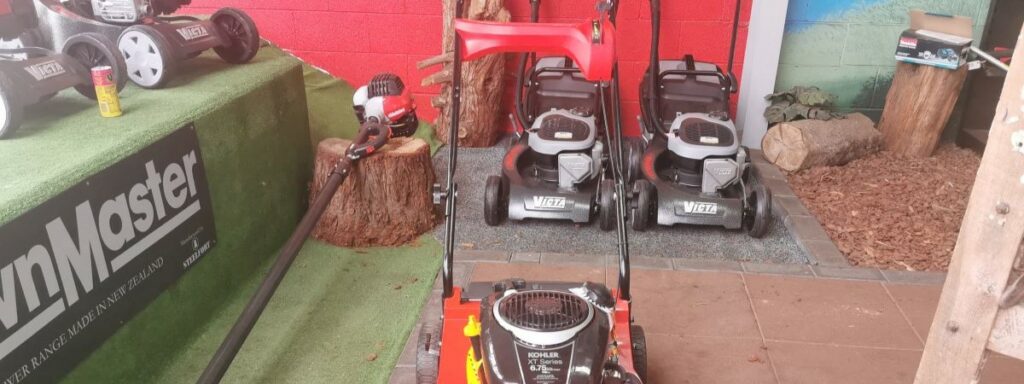
Choosing the Right Mower
Here is a breakdown of the most common types of mowers and their ideal uses:
| Type of Mower | Ideal Use |
|---|---|
| Push Mower | Small to medium-sized lawns with even terrain |
| Riding Mower | Large lawns with uneven terrain |
| Mulching Mower | Lawn with a lot of leaves and debris |
Setting the Cutting Height
Here are the typical cutting heights for common grass types:
- Bermuda grass: 0.5 to 1.5 inches
- Zoysia Grass: 1 to 2 inches
- Fescue grass: 2.5 to 3.5 inches
- Kentucky Bluegrass: 2 to 3 inches
Once you have determined the correct cutting height for the lawn mower, adjust the mower blades accordingly, and be sure to avoid scalping the grass by cutting too low.
Proper mower selection and setting the cutting height are crucial for a beautifully maintained lawn. By using the right tools and techniques, you can ensure your lawn stays healthy and looks great.
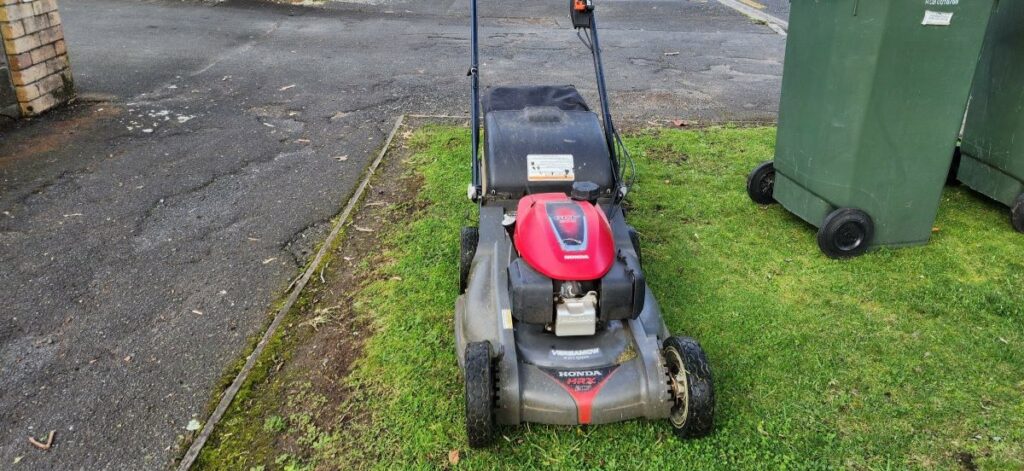
How To Cut A Lawn.
Edge Trimming and Clean-up
Trimming the edges of your lawn is an essential part of the mowing process. By trimming the edges, you give your lawn a clean and professional look. Before mowing, take some time to clear any debris from around the edges of your lawn, including rocks, branches, and toys. This will prevent your mower from kicking up debris and keep your lawn looking sharp.
When trimming your lawn’s edges, it’s important to angle the blades of your trimmer slightly upward to avoid scalping your grass. Take your time and move slowly to ensure that you’re trimming the edges evenly and accurately.
I would suggest that you go over the edges first with a string trimmer before you mow. Always go in the opposite direction to the direction your machine head is spinning.
This will do two things
- Throw the grass clippings back onto the grass for an easier cleanup and a tidier job.
- Reduce the chances of breaking windows
I would also suggest that you follow a line around the lawn perimeter. When you come across any objects (trees etc.), step off your line, trim around the object step back onto the line, and continue. This will be the most efficient way to use the trimmer as you will only visit each area once and end up at the same spot you started at.
Don’t use the hunt-and-peck method as this takes twice the time and is a lot less effective.
Next, it’s time to mow the lawn.
Before starting to cut, it is important to prepare the lawn properly and mow the lawn the right way. This will ensure a healthy and even cut for your grass. Here are some lawn-mowing tips to help you prepare your lawn:
| Step | Description |
|---|---|
| 1 | Remove any obstacles such as stones, toys or branches. These can damage the mower, result in an uneven cut, and even be a hazard to people and pets in the yard. |
| 2 | Check for any weed growth and remove any weeds before mowing. Weeds can block sunlight and other nutrients from the grass, resulting in an unhealthy lawn. |
| 3 | Ensure the grass is healthy by watering it regularly and feeding it with the right nutrients. A healthy lawn will grow evenly and have a vibrant green color. |
| 4 | Cut often, but not too short. Grass should ideally be cut one-third of its length. Cutting too short can damage the grass blades and result in a brown, patchy lawn. |
Following these steps will ensure that your lawn is prepared for a successful mowing session. Not only will it look better, but it will also prevent damage to your mower and ensure the longevity of your lawn.
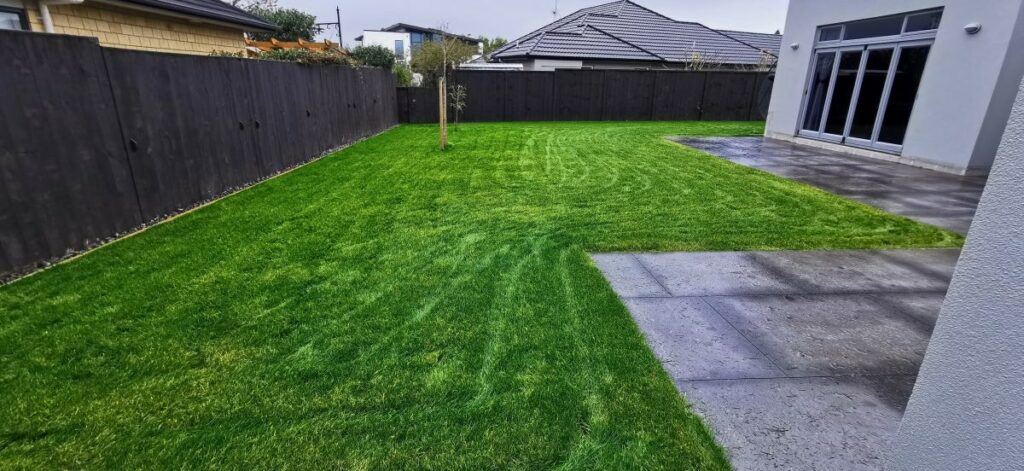
Mowing in the Right Pattern
When it comes to mowing your lawn, the direction you cut and the pattern you create can make a big difference in the overall appearance of your yard. Mowing in the right pattern can give your lawn an even and professional look.
One common pattern is the striping pattern, where you mow parallel to the previous row and alternate the direction of the mow each time. This creates a visually appealing striped effect that looks great for larger lawns.
Another pattern is the checkerboard pattern, where you mow in a diagonal pattern and then mow in the opposite diagonal pattern. This creates a grid-like appearance and can be a great option for smaller lawns.
It’s important to vary your mowing pattern each time you need to mow to prevent ruts and wear patterns in your lawn. This will also help prevent soil compaction and improve the overall health of your grass.
Remember that the direction you mow can also affect how your grass blades lean. If you want your grass to lean towards your house or other landscaping features, mow in that direction. If you want your grass to lean away from those features, mow in the opposite direction.
Experiment with different mowing patterns and directions to find what works best for your lawn. By mowing in the right pattern, you can achieve a beautiful and healthy lawn that you can be proud of!
Here is a study of lawn mowing patterns and what is best by Wired magazine. Optimal Lawn Mowing Patterns
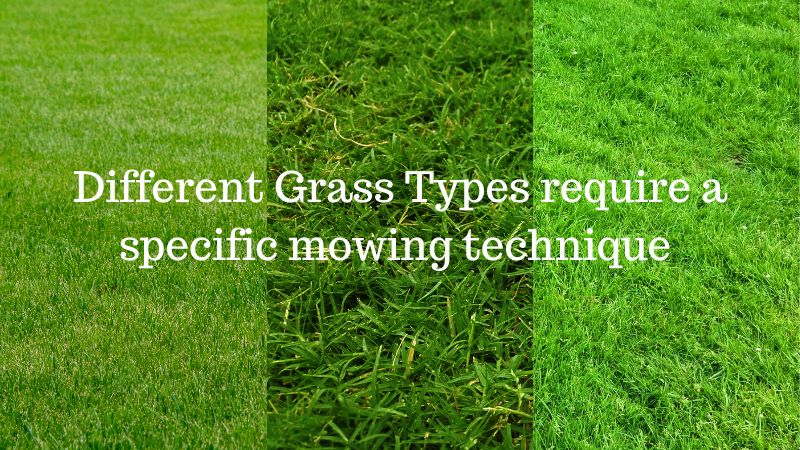
Mowing Techniques for Different Grass Types
When it comes to lawn mowing, not all grass types are created equal. Each type of grass requires a specific mowing technique to maintain optimal health and appearance. Here are some tips for mowing different grass types:
| Grass Type | Mowing Technique |
|---|---|
| Bermuda grass | Use a reel mower or a rotary mower with a sharp blade. Mow to a height of 1.5-2 inches. |
| Fescue grass | Use a rotary mower with a sharp blade. Mow to a height of 2-3 inches. |
| Zoysia grass | Use a reel mower or a rotary mower with a sharp blade. Mow to a height of 0.5-1.5 inches. |
It’s important to note that the type of mower you use also affects the health and appearance of your lawn. For example, a push mower is better for your lawn than a heavier riding lawn mower, as it causes less soil compaction. Additionally, always make sure your mower blades are sharp, as dull blades can tear the grass and make it more susceptible to disease.
By following these mowing techniques for different grass types, you can help ensure that your lawn stays healthy and beautiful.
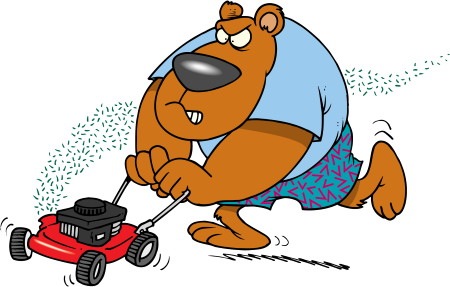
Proper Mowing Etiquette
When it comes to mowing your lawn, there are a few etiquette tips that can help you be a good neighbor and maintain a pleasant outdoor environment. Following these tips will ensure that you are mowing your lawn in the best way possible.
- There is a right and a wrong way to mow your lawn: The best time to mow your lawn is during daylight hours, but you should avoid mowing early in the morning or late in the evening when your neighbors may be trying to sleep or relax.
- Be mindful of noise: Mowing your lawn can be noisy, so try to be as quiet as possible. One way to do this is to use a push mower instead of a riding mower, which tends to be louder. Additionally, you may want to consider using earplugs or noise-canceling headphones to protect your ears from loud sounds.
By following these simple etiquette tips, you can ensure that you are maintaining your lawn in a way that is considerate of your neighbors and the environment around you.
After you’ve completed mowing and edging your lawn, it’s time to clean up any stray lawn clippings that may have been left behind. Leaving clumps of grass clippings on your lawn can block sunlight and nutrients from reaching your grass, making it more difficult for your lawn to thrive.
The best way to dispose of the cut grass clippings is to use a bagging attachment on your mower. This will collect the clippings as you mow, making clean-up much easier. If you don’t have a bagging attachment, use a rake to collect the clippings and dispose of them in the compost or yard waste bin.
By following these simple tips for edge trimming and clean-up, your lawn will look its best every time you mow.
Lawnmowing101 Membership

Build a six-figure lawn care business
Lawn Care Software

Get Your Lawn Care Business Running Smoothly
Easier for you and your customers. Jobber helps you quote, schedule, invoice, and get paid—all in one place.
Mowing a Lawn When It’s Wet
One of the biggest challenges you may face when mowing your lawn is dealing with wet grass. Wet grass can be difficult to cut and tends to clump and clog your mower, which can leave your lawn looking uneven and unsightly. Here are some tips to help you mow your lawn safely and effectively when the grass is wet:
If you are mowing lawns commercially and you cannot wait for the lawn to dry then my first suggestion is to ALWAYS START THE MOWER ON THE GRASS. This will eliminate those horrible green rings you can get on concrete when you start a mower on it on a wet day.
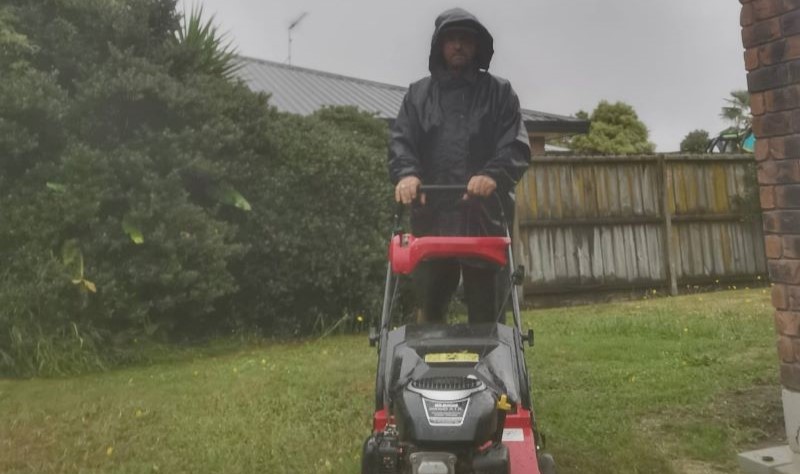
1. Wait for the grass to dry as much as possible.
If you can, wait until it is dry before you mow your grass. This will make the job much easier and will result in a cleaner cut. If you must mow when the grass is wet, wait until the dew has dried and the sun has been up for a few hours. This will help the grass to dry out and will make it easier to cut.
2. Adjust your mower height.
When mowing wet grass, it’s important to raise the cutting height of your mower. This will prevent the grass from being cut too short, which can cause damage to the roots and make it more difficult for the grass to recover. A good rule of thumb is to raise the cutting height by about a half inch when mowing wet grass.
3. Mow in a different pattern.
If you normally mow your lawn in one direction, consider mowing in a different pattern when the grass is wet. This can help to prevent clumps from forming and will result in a cleaner cut. Try mowing in a diagonal pattern or making a second pass at a different angle.
4. Clean your mower more frequently.
Wet grass tends to stick to the undercarriage of your mower, which can clog the blades and make it more difficult to cut the grass. To prevent this from happening, stop frequently to clean the underside of your mower with a hose or scraper. This will help to keep your mower blades sharp and prevent clumps from forming.
Remember that when you clean under a mower or do any mower maintenance you must follow these two simple rules
- Always disconnect the spark plug before starting
- Always point the spark plug towards the sky so you don’t damage your mower.
5. Avoid walking on wet grass.
Walking on wet grass can cause damage to the roots and make it more difficult for the grass to recover. If possible, try to avoid walking on wet grass while you’re mowing. If you must step on the grass, do so lightly and be careful not to leave deep footprints.
By following these tips, you can safely and effectively mow your lawn even when the grass is wet. Remember to always take care when mowing your lawn and to follow proper safety guidelines to prevent injury. With a little patience and careful attention to detail, you can keep your lawn looking beautiful and healthy all season long.
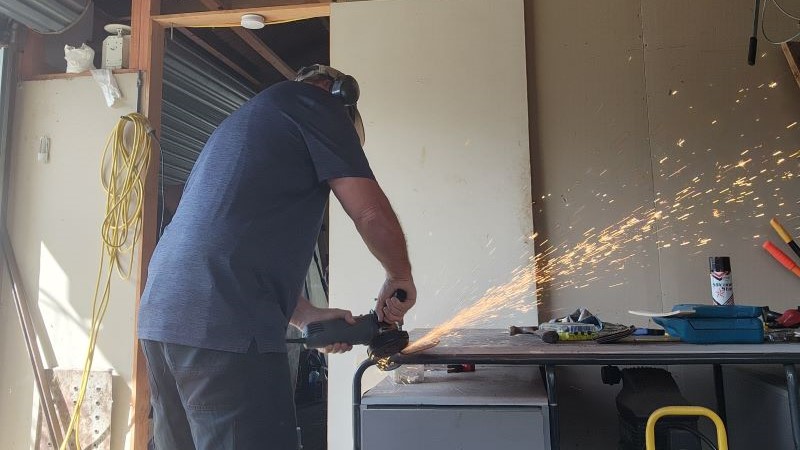
Maintaining and Sharpening Mower Blades
Keeping your lawn looking its best requires regular lawn care, and one of the most important aspects of that care is maintaining and sharpening your mower blades. Dull blades can damage the grass, leaving your lawn looking uneven and unhealthy. By following these simple steps for your push mower or riding mower, you can ensure that your blades are always sharp and ready to tackle any job.
Steps for Maintaining Mower Blades
To begin, always disconnect the spark plug or power source to prevent the mower blades from accidentally starting while you’re working on them. Then, follow these steps:
- Remove the blade from the mower. For push mowers, this typically involves removing a single bolt.
- Clean the blade thoroughly, removing any grass clippings or debris.
- Inspect the blade for any signs of damage, such as chips or cracks. If the blade is damaged, do not attempt to sharpen it instead, replace it with a new one. I always keep a new blade on hand that I can measure against the existing blade. This will also let you know if your blade is bent as it won’t line up with the new blade.
- Use a file or grinder to sharpen the blade. Follow the manufacturer’s recommendations for the correct angle and be sure to file in the same direction as the original cutting edge.
- Once the blade is sharp, balance it by placing a nail or screwdriver through the center hole and holding it horizontally. If one side of the blade dips, file a bit more material from that side until the blade is balanced.
- Reinstall the blade, making sure it’s secure and properly aligned.
By making sure your blades are sharp and balanced, you’ll enjoy a more evenly cut lawn that looks healthy and beautiful.
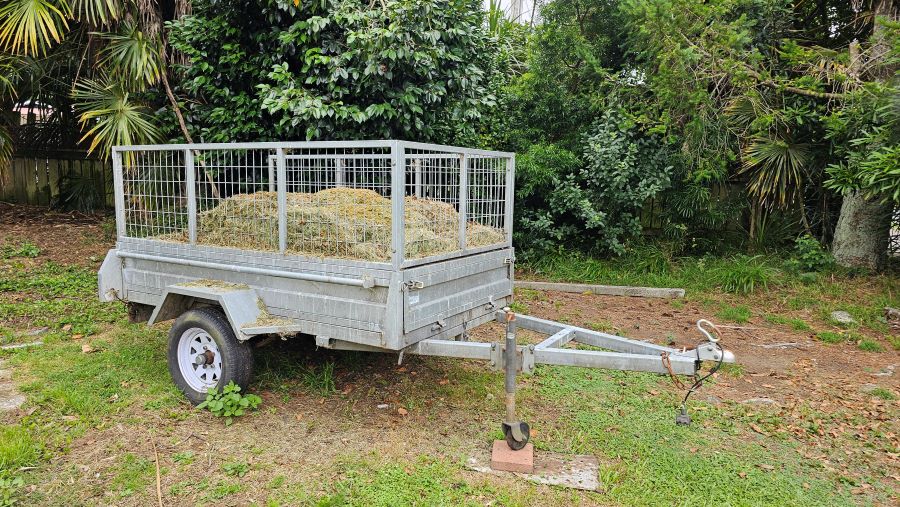
Section 11: Disposing of Grass Clippings
Now that you have a freshly mowed lawn, it’s important to properly dispose of the grass clippings to avoid clumps that can damage the grass underneath. The good news is that grass clippings can be used in a variety of ways, including composting and mulching.
Composting Grass Clippings
Composting is a natural and eco-friendly way to dispose of grass clippings. By composting your grass clippings, you can create a nutrient-rich fertilizer for your lawn that can help it thrive. To compost your grass clippings, simply mix them with other organic materials like leaves and kitchen scraps and let them decompose over time. Make sure to turn the compost pile regularly to ensure proper aeration and decomposition.
Avoiding Clumps on the Lawn
While grass clippings can be beneficial for your lawn, it’s important to avoid clumps that can smother the grass underneath. To prevent clumps, try mowing when the grass is dry and using a mower with a bagging system to collect the clippings. You can also try mowing more frequently to prevent the clippings from piling up.
Remember, proper disposal of grass clippings can not only benefit your lawn but also the environment. Consider composting or mulching your grass clippings to create a healthy and beautiful yard.
Tips to Help Your Lawn Thrive
If you want to have the best lawn on the block, it’s important to take care of it properly. Cutting your grass is just the beginning. Here are some additional tips to help your lawn thrive:
- Watering: Make sure to water your lawn deeply and infrequently, rather than with frequent shallow watering. This helps the roots grow deeper and makes the grass stronger.
- Fertilizing: Use a high-quality fertilizer and follow the instructions carefully. Over-fertilizing can damage your lawn.
- Leave the grass blade longer: Cutting your grass too short can weaken it and make it more susceptible to damage from pests and drought. A general rule is to never remove more than one-third of the grass blade at a time.
- Leave the grass clippings: Instead of bagging your grass clippings, leave them on the lawn. They act as a natural fertilizer and can save you time and money.
By following these tips and proper mowing techniques, you can have a healthy and beautiful lawn that you can be proud of.
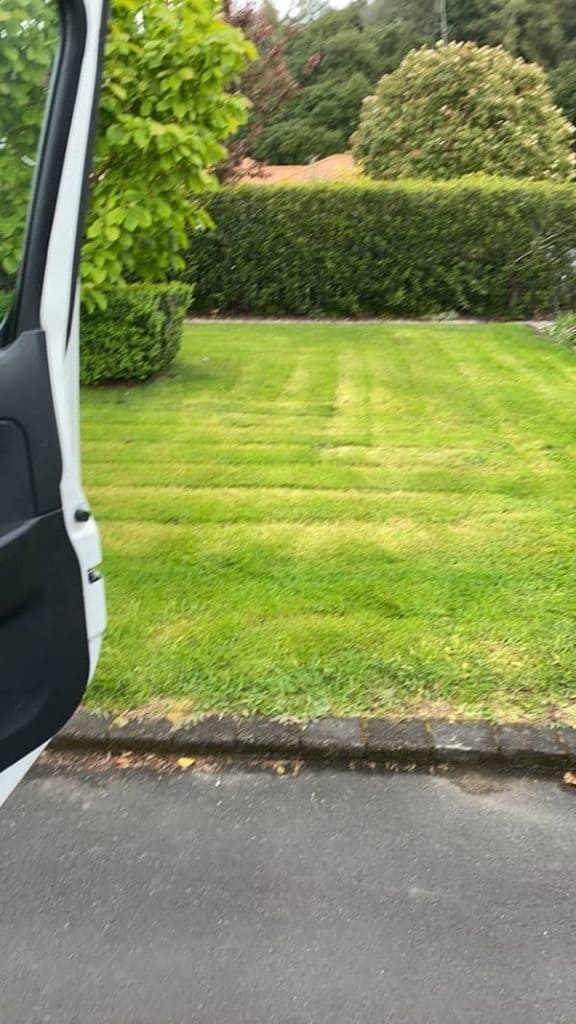
Common Mistakes to Avoid
Mowing a lawn may seem like a straightforward task, but many people make common mistakes that can damage their grass and ruin the appearance of their lawn. One of the biggest mistakes is mowing in the wrong direction. Mowing in the same direction every time causes the grass blades to lean in one direction, giving the lawn an unattractive appearance. To prevent this, you should vary the direction you mow each time.
Another mistake is cutting the grass too short. Mowing too low can damage the grass, leading to brown patches and weak roots. To avoid this, set the cutting height of your mower according to the type of grass you have and how much growth it has.
Using dull blades is also a common mistake that can damage the grass. Dull blades tear the grass instead of cutting it cleanly, leaving the lawn vulnerable to disease and pests. To avoid this, sharpen your mower blades regularly to ensure a clean, even cut.
Finally, mowing too infrequently can cause problems as well. When you let your grass grow too long before mowing, it can become stressed and weak, making it more susceptible to disease and pests. To keep your lawn healthy, mow it regularly and avoid removing more than one-third of the grass blade at a time.
By avoiding these common mistakes, you can keep your lawn looking its best and ensure that your mowing efforts are effective. Remember, proper mowing techniques are essential for a healthy, vibrant lawn.

Troubleshooting Lawn Mowing Issues
If you’re having trouble getting your lawn to look its best after mowing, there are a few common issues that you may be dealing with. Here are some tips on how to troubleshoot lawn mowing issues:
- New Grass: If you’ve recently planted new grass, be sure to mow it when it reaches a height of at least 3 inches. This will allow the grass to establish deeper roots and grow stronger.
- Extended Text Terms: If you notice brown patches or uneven growth after mowing, it may be a sign that you’re mowing too often or not often enough. Try adjusting your mowing schedule to see if it makes a difference.
- Bumpy Lawn: If your lawn is bumpy and uneven, it can make it difficult to get a clean and even cut. Consider aerating your lawn to help even out the surface before mowing.
- Damaged Blades: If your mower blades are dull or damaged, they may not be cutting the grass evenly. Be sure to sharpen or replace your blades regularly to ensure a clean cut.
By addressing these common issues, you can ensure that your lawn looks its best after mowing.
Tips for Mowing Your Lawn Safely
When it comes to mowing your lawn, safety should always be a top priority. Here are some tips to help ensure that you mow your lawn safely:
- Choose the right time of day to mow: Mow your lawn during the cooler parts of the day, such as early morning or late afternoon. Avoid mowing during the hottest part of the day to prevent heat exhaustion or dehydration.
- Keep children and pets away from the lawn: Make sure your children and pets are inside or kept away from the lawn while you are mowing. Flying debris or rocks can cause injuries if they are not careful.
- Wear the appropriate clothing and protective gear: Wear closed-toe shoes, long pants, and safety glasses to protect yourself from debris and excessive noise. Consider wearing earplugs or noise-canceling headphones to protect your hearing from prolonged exposure to loud noises.
- Clear the lawn before mowing: Walk the lawn before mowing to make sure there are no toys, branches, or other debris that could damage the mower or cause an accident.
- Use the mower properly: Always follow the manufacturer’s instructions for starting and operating the mower. Do not remove safety guards or shields. If you are using a riding mower, make sure that you are using it on level ground and that you do not have any passengers riding with you.
By following these safety tips, you can mow your lawn with confidence, knowing that you are taking the necessary precautions to prevent accidents and injuries.
Listen to audiobooks while you work.

With a sixty-day free trial
Discover millions of ebooks, audiobooks, and so much more for just $9.99/month.
Conclusion: How to Mow a Lawn Correctly
In conclusion, mowing your lawn correctly is a crucial component of maintaining a healthy and beautiful yard. By following the step-by-step guide, choosing the right mower, setting the appropriate cutting height, and mowing in the right pattern, you can keep your grass healthy and looking its best.
It’s also essential to take the time to trim edges, dispose of grass clippings properly, and maintain and sharpen your mower blades. Remember, regular lawn care is crucial, and by avoiding common mistakes and troubleshooting any issues that arise, you can keep your lawn in top condition.
Follow proper mowing techniques, and your lawn will thank you with a lush, green appearance. Lastly, always prioritize safety when mowing your lawn. Wear protective gear, be mindful of the time of day you mow, and keep children and pets away from the lawn while mowing. With these tips and guidelines, you’ll be on your way to having the best lawn on the block.
Get tips & tricks on how to grow a profitable lawn care business delivered to you inbox every week.
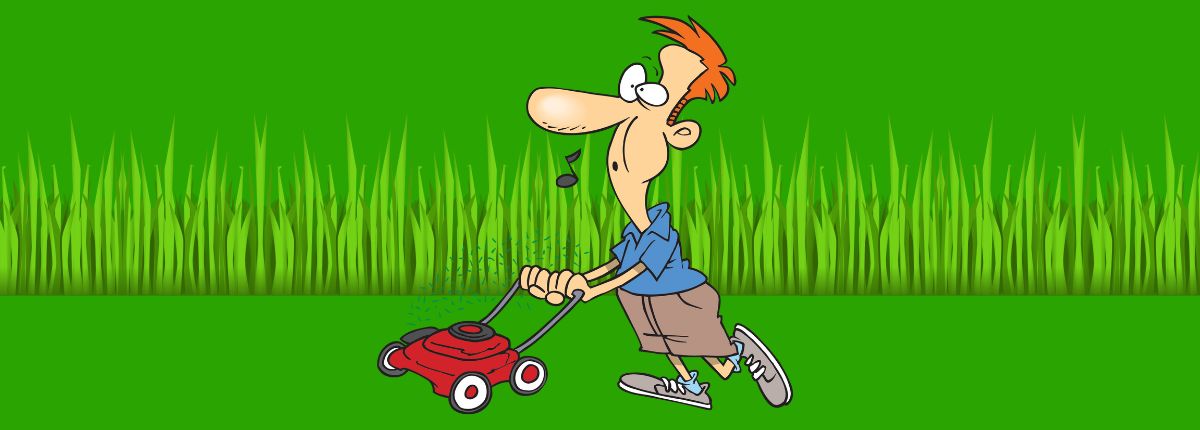
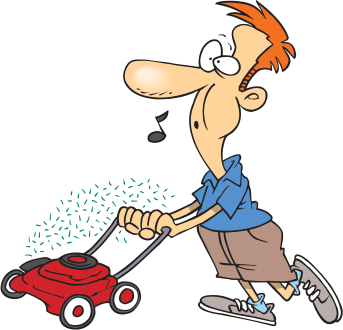
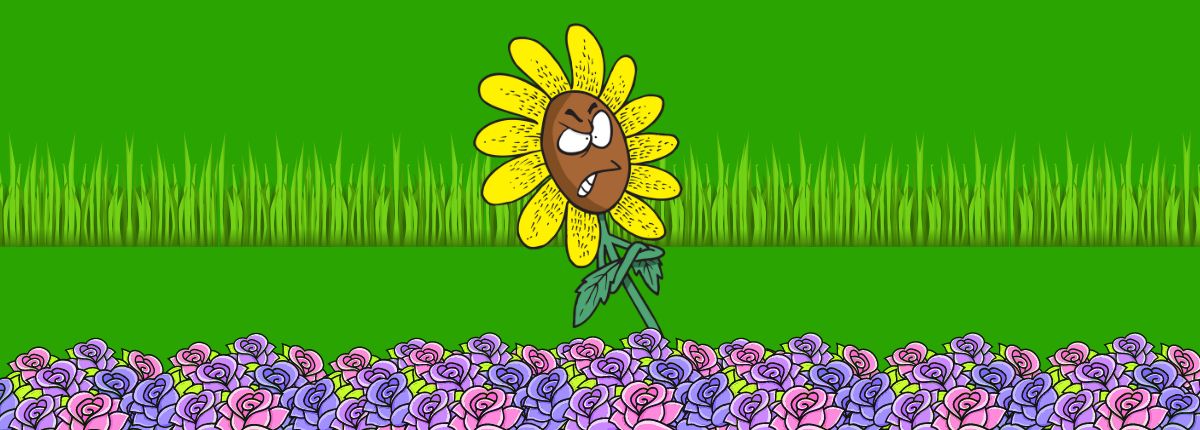
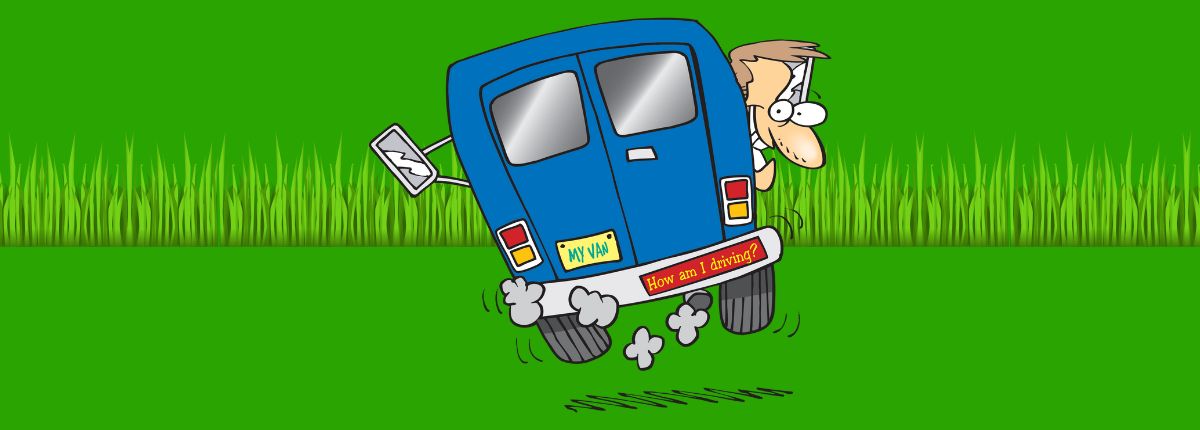


Leave a Reply